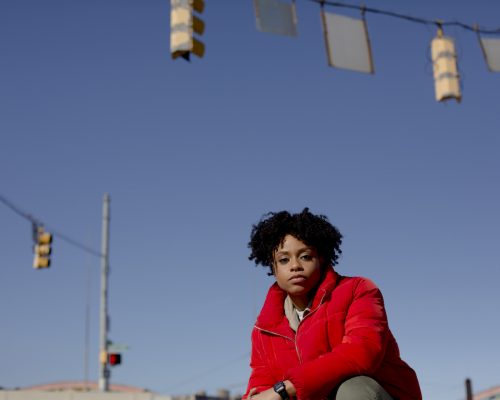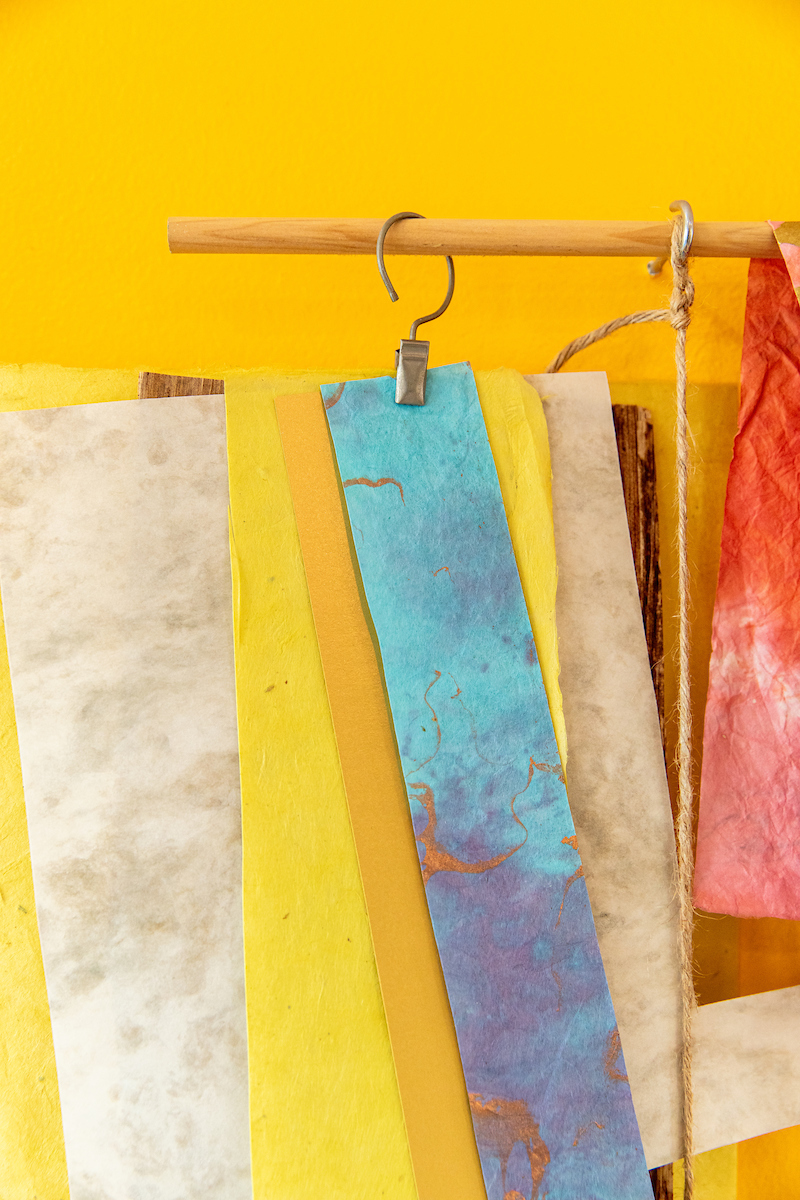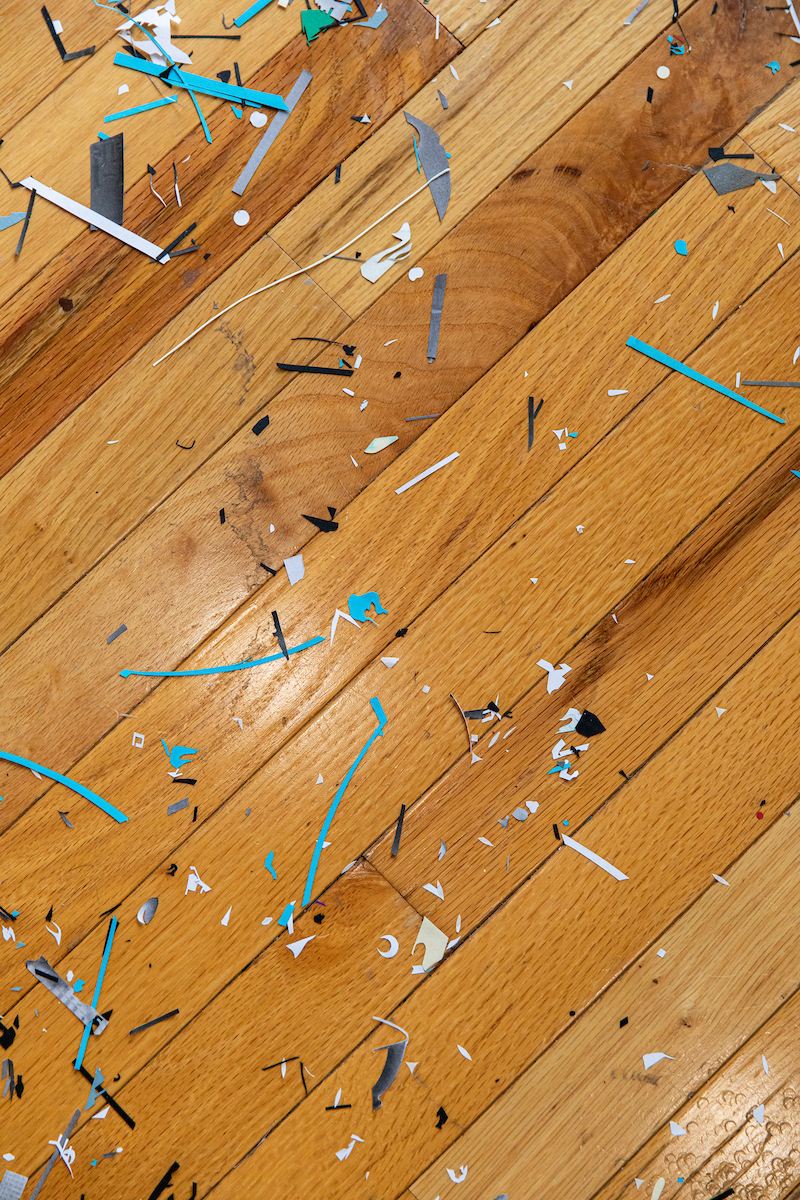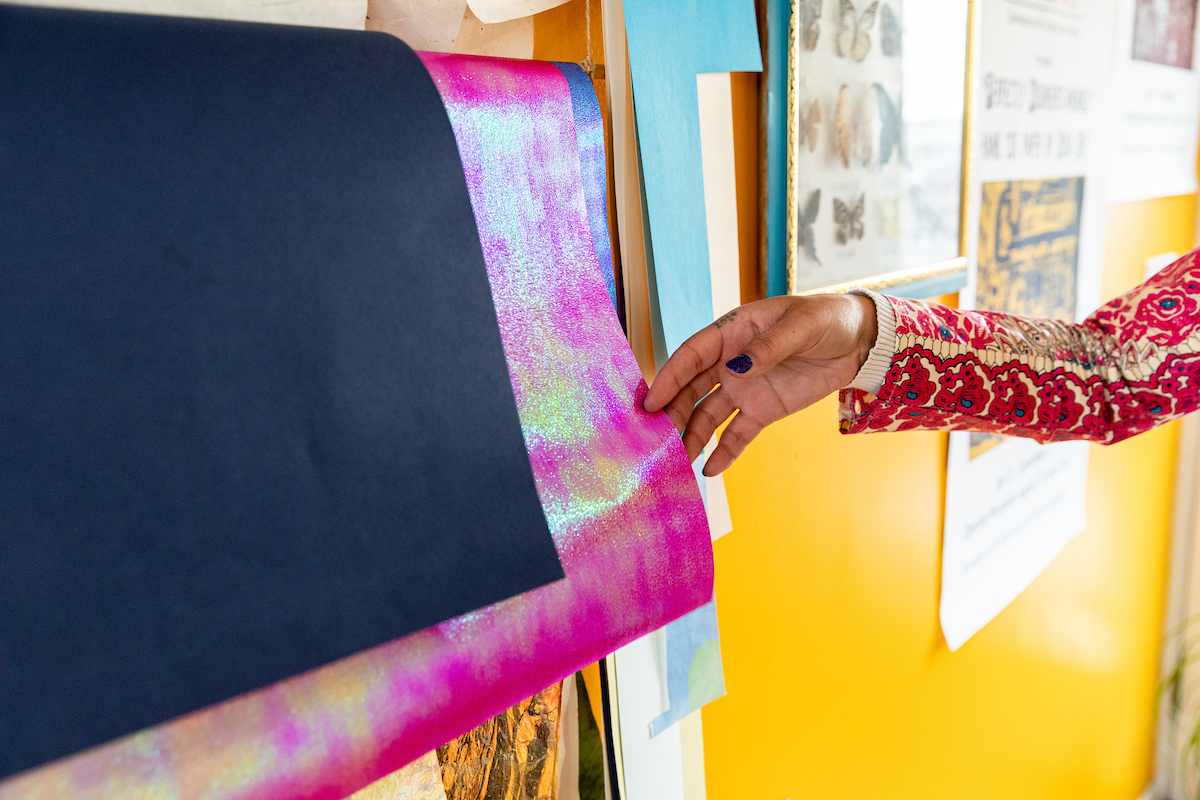Rosa Leff hates fuzzy edges. They are a clear sign that the paper-cutter has not selected the right paper for cutting. Or worse, the cutter in question is a computer. Leff has no interest in learning technology to do her work. “There’s no fun in cutting yourself out of the process,” she says. Hand slicing, Leff believes, is the only way to get clean corners, which the self-described perfectionist considers the most important cuts in a piece.
Born in Philadelphia, Leff spent her later teen years in Middlebury, Vermont and then went to Sarah Lawrence College for her undergraduate degree. She got her Master of Science degree in elementary education at University of Pennsylvania and taught in Philadelphia public schools before moving first to Rockville, MD and then Baltimore last year. Leff still commutes on weekdays to Rockville where she teaches kindergarten, but she wanted to live in Baltimore for its art scene. “I think Baltimore actually makes it easy if you’re trying,” she says. “Anybody you talk to will give you the time of day if you’re polite. Everyone I’ve reached out to has agreed to take a meeting, even if they tell me, ‘I don’t think you’re a good fit for this,’ which is impressive.”
Leff is a hard worker whose doodles during staff meetings turn into papercuts at home. She cuts paper on her lunch breaks at the Orthodox day school where she teaches, first thing in the morning as the sun rises, and whenever she can find a spare 15 minutes to dash up to her third-floor studio in the Riverside rowhouse she shares with her husband and their pets. Her entirely self-taught paper-cutting practice began at her dining room table, “but it got out of control,” she laughs, gesturing around her designated art space, with precisely cut paper scraps littering the floor like confetti.
Her paternal grandmother, Jacqueline Ziegler, was a professional painter and taught Leff many art techniques. Ultimately, though, Leff decided that painting wasn’t her medium. She found paper cutting when working on a children’s book while in graduate school for elementary education. She spent “way too much time on the illustrations” for the book and realized that unlike oil painting, “paper seemed to listen to me better.”

What’s especially impressive about Leff is that she’s had a steady roster of exhibitions since her first gallery show in 2017 without going through any formal art-school training or the network it typically provides. She was one of two Americans invited to exhibit last year at the Xianyang Papercutters Association conference, which is arguably the most prestigious paper cutting invitational.
She has accomplished all this because, in addition to being a paper-cutting maestro, she is a rare master of the oft-dreaded putting herself out there: she’s ready to fire off a cold email and walk up to a stranger at an industry event. An extrovert who still needs her down time, her coworkers describe her as a “Jekyll and Hyde,” wearing conservative clothing to her day job and then changing into her preferred vibrant threads while sitting in traffic on the Beltway on the way home.
To make the somewhat gritty urban landscapes she has become known for, Leff works from photographs she takes while traveling internationally—she’s made papercuts of her trips to Japan, China, Cuba and South Africa, among others. She steadily cuts away paper to reveal a second color or decorative paper which she calls “the light.” Similar to how a sculptor might cut away marble to reveal a form, Leff’s 2-D process is a reduction of a sheet of paper until it holds the scene in all the detail she can manage.
Working from what she identifies as the hardest part, which can be an unusual texture, intricate pattern, or elaborate lettering, Leff cuts from one side or corner of the paper to the other, making decisions as she goes, “cutting into it and hoping for the best.” Leff’s work always includes a hand-cut signature, and she is most often asked to teach other practitioners exactly how she achieves her very thin powerlines, which she adores capturing in her frequent sky-views. Part of her joy in this practice comes from never knowing “how a piece is going to look until it’s done; there’s always a big reveal moment.”
Along with her landscape works, Leff has been exploring the theme of adulting, a concept she struggles with as a 30-year-old artist who is also trying to be a partner and friend. These works, which she cuts into found paper bags, towels, and plates are Leff’s effort to branch out from traditional paper-cutting materials and subjects. Leff has an immense respect for both the history and the work of other contemporary paper cutters.
“I’m on the board of Guild of American Papercutters and we definitely have a mix of people that are practicing traditional Scherenschnitte and Papel picado and a few of us that are exploring urban landscapes and portraits,” she says. The style of her work, which feels simultaneously film noir and highly rendered graphic novel, stands apart.
In her light-filled studio with panoramic views of the Baltimore harbor, Leff and I talked about eating too much on vacation, the ongoing friction between so-called delineations between fine art and craft, and why it’s important to make yourself laugh.

SUBJECT: Rosa Leff, 30
WEARING: “I live in my Kate Spade Keds. This jacket I bought in Capetown, South Africa from a company called Wag Fashion and a basic white tank and jeans. Vintage porcupine necklace and vintage earrings.”
PLACE: Riverside
[Editor’s Note: This interview was conducted in late January, pre-pandemic.]
















